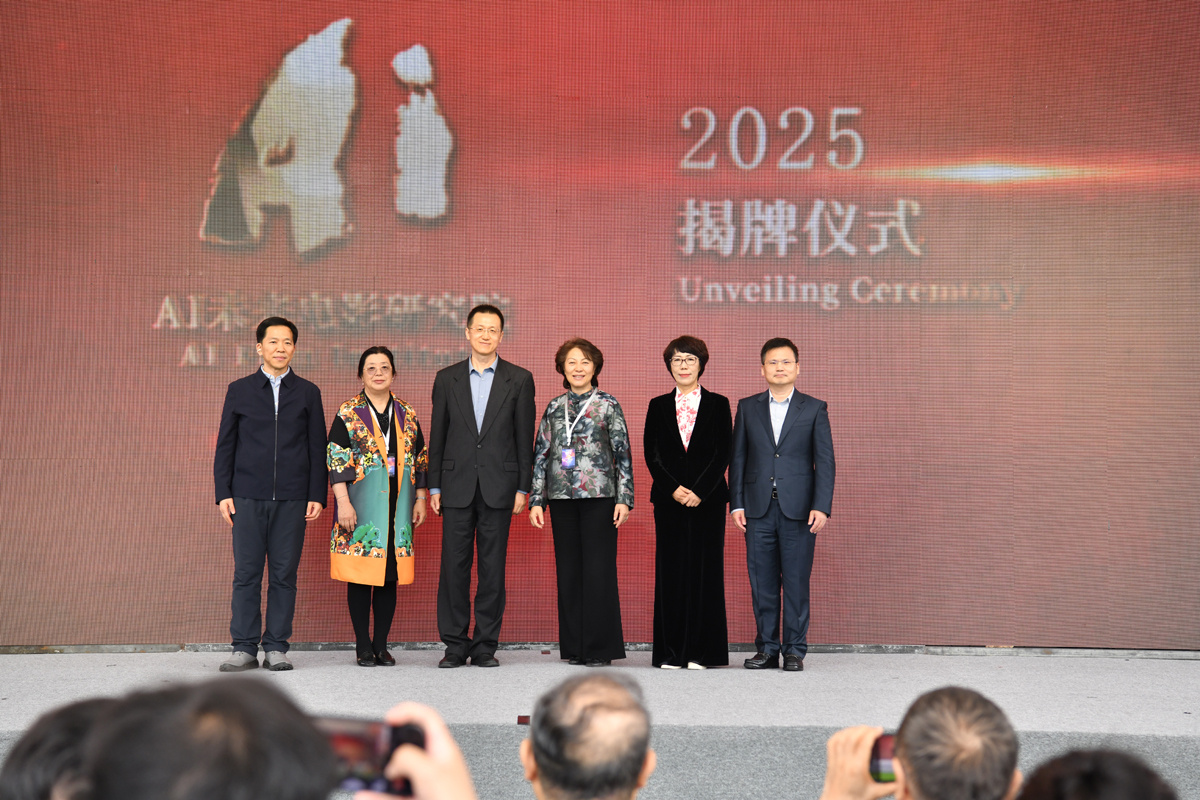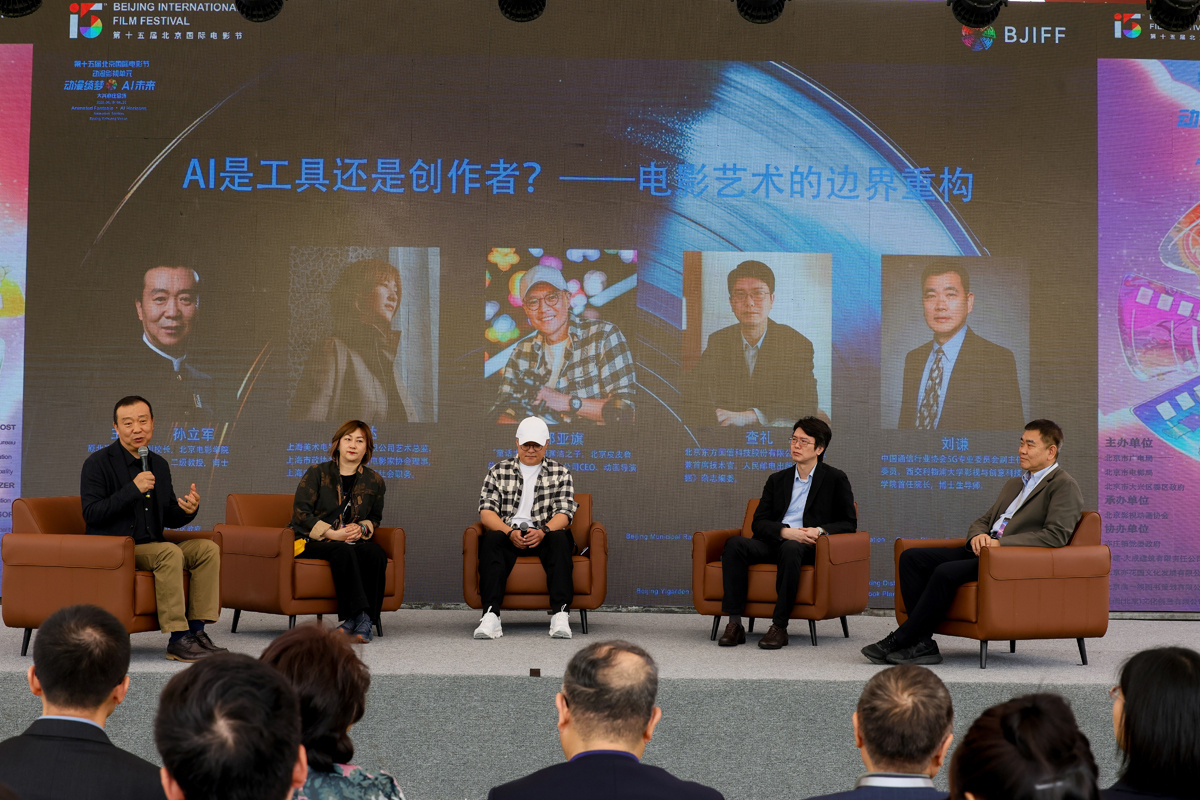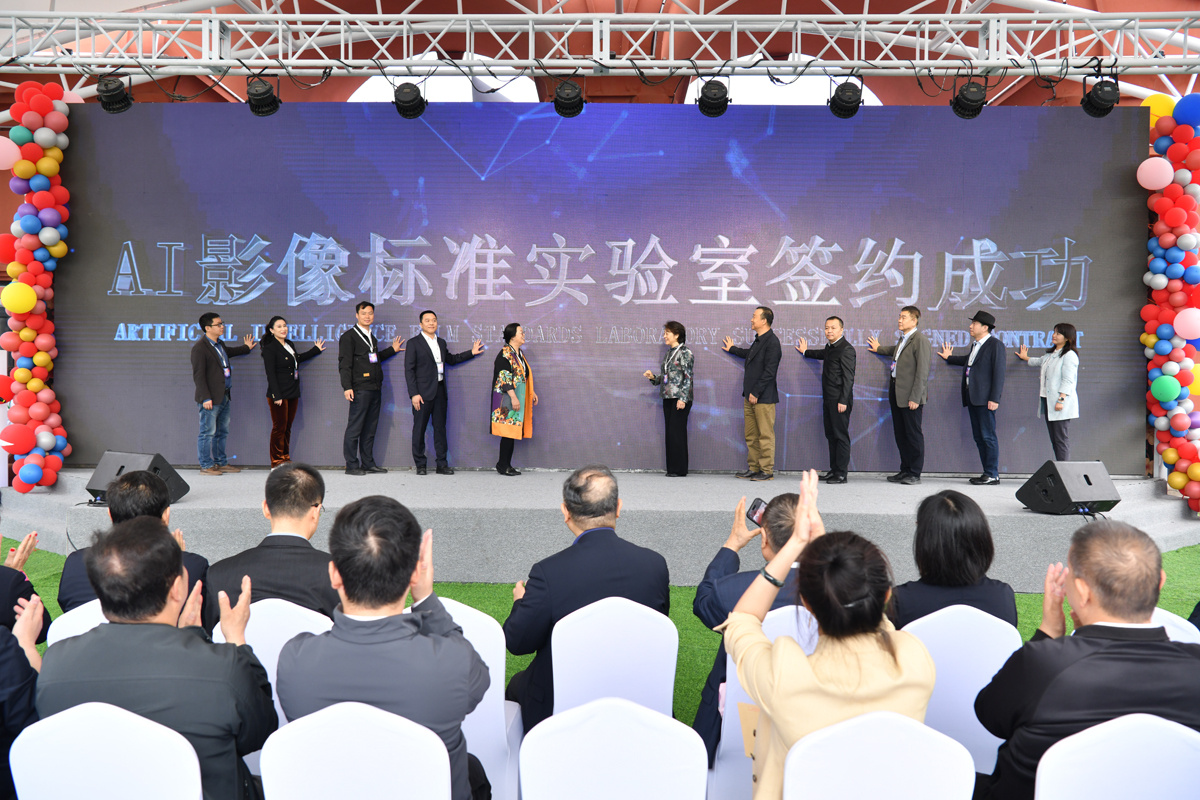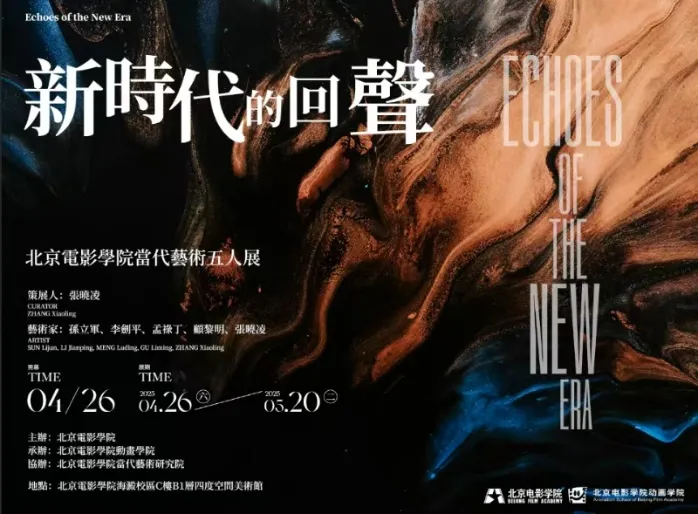On April 20, the 15th Beijing International Film Festival Animation and Film Unit Daxing Yizhuang venue was held at the Yihua Garden Entrepreneurship Ecological Park. On this exhibition platform that brings together multiple contents such as animated films, AI images, cultural and creative derivatives and industrial landing, a future-oriented system-level release attracted attention - the “Future Film Research Institute” was officially unveiled, and two important platforms were launched simultaneously: the AI Image Standard Laboratory and the Smart Toy R&D Center.
Rather than a release, this is a deep response from filmmakers to the AI era. At a time when content creation is facing a wave of generative technology, this series of actions led by Sun Lijun, dean of the Chinese Animation Research Institute of the Beijing Film Academy, is not just about showing off skills, but focuses on the core issue of “how to get AI into the film industry system” and provides a set of standardized, process-based, and tool-based overall solutions.
Animation and Film Unit: Creative Ecosystem Driven by AI Technology
The theme of this Daxing Yizhuang venue is “Animation Dreams·AI Future”, which revolves around how AI participates in the integration of film and television creation and animation. During the event, many animated feature films and short films produced with deep participation of AI were released on site, covering fantasy, science fiction, reality and other themes. Most of these works are based on generative technology, reflecting the creative innovation brought by technology in terms of camera scheduling, character movements, style integration and other aspects.

The emergence of these works indicates that AI can not only assist in content generation, but is also becoming a part of film narrative language, visual expression and creative methods. More importantly, they rely not on scattered tools but on a complete set of systematic methods.
It is in this context that the unveiling of the Future Film Institute and the simultaneous launch of its subordinate platforms have more far-reaching significance.
Future Film Research Institute unveiled: “Building a foundation” for creation
Witnessed by guests and university representatives, the Future Film Research Institute was officially unveiled in Yizhuang. Led by Sun Lijun’s team, the institute is jointly established with universities, industry associations and creative institutions, and is committed to exploring the systematic production path of generative image content.
The core mission of the institute is to build a complete creation and production system around the film production process with deep involvement of AI, with the goal of “standardization”. The most important research direction is to move from “scattered experiments” of content generation to controllable, evaluable, and implementable industrial processes.
According to reports, the institute not only focuses on the creative link, but also extends to technology, production, review, and derivatives, with the goal of forming a content production methodology covering the entire chain. The “standard guidance + process support + tool drive” trinity architecture it proposed is gradually becoming a new paradigm for generative film creation.

The first major event: AI imaging standard laboratory settled in Yizhuang
After the unveiling ceremony, the Future Film Institute signed cooperation agreements with the China Electronics Video Association, China Animation Society, Beijing Film and Television Animation Association, New York Film Academy, Beijing University of Posts and Telecommunications, Beijing University of Technology, Xi’an Jiaotong-Liverpool University and other institutions, announcing the official establishment of the “AI Imaging Standards Laboratory”.
The laboratory aims to address industry challenges caused by the widespread application of AI technology in animated films, short videos, virtual characters and other fields: such as large differences in the quality of works, uncontrollable generated content, lack of review mechanisms, and lack of unified style management.
The laboratory’s key research directions include: building a quality assessment system and style control mechanism for AI image generation; establishing process standards and technical interface specifications for each link from script generation, storyboard planning to shot generation, sound design, etc.; studying the controllability of AI-generated content and the ethical boundary assessment mechanism; building a technical tool platform to serve industry and university teaching, and realize the linkage of “production, education, research and application”.
This marks the beginning of China’s role transformation from “user” to “rule maker” in the field of AI film and television content.

The second major event: the simultaneous launch of the smart toy R&D center
On the same day, another industrial cooperation was officially launched at the Yizhuang venue. The Future Film Research Institute, together with Beijing University of Posts and Telecommunications, Beijing University of Science and Technology, Xi’an Jiaotong-Liverpool University, Yizhuang Town Government, Shipai Town Government of Dongguan City, Dongguan Trendy Toys Association and other parties, jointly built the “Smart Toy R&D Center”. The R&D center will build a new model for the coordinated industrial implementation between Beijing and Guangdong, promote the healthy development of the industrial chain of IP derivatives, and redefine the new equation of the toy industry with technology.
The center focuses on transforming the visual content and character IP in animated film creation into smart toy products with educational, entertainment and interactive value through AI-driven intelligent interaction technology. Its goal is to create a complete platform that integrates creative design, technology research and development, prototype verification, and mass production.
The establishment of the Smart Toy R&D Center means that film content is no longer limited to the screen, but can enter parent-child scenes, educational spaces and trendy toy markets through AI and perception technology, further expanding the commercial boundaries and application ecology of film and television content. AI technology is added to the production of IP derivatives, which greatly improves the innovation ability and the aesthetic ability of film workers, and finally synthesizes efficient execution, so that the entire project chain of animated films and IP derivatives can run rapidly.

Industrial Reconstruction: Standard × Tool × Model × Production
Supporting these two platforms is a complete film and television industry system that Sun Lijun’s team is building for the AI era. Different from the traditional “AI drawing + editing” style of scattered creation, they emphasize that the real upgrade of the film industry must start with standards.
First, it is standard innovation: by dividing the links and functional positioning of AI-generated content, the Institute has established a set of process standards suitable for generative film creation. These standards cover multiple key nodes from script disassembly, storyboard generation, camera scheduling, character movement to sound effect rhythm, etc., to ensure the controllability and evaluability of the creation quality.
Secondly, it is process optimization: guided by creative needs, the Institute reconstructs the content process through engineering, designs task decomposition mechanisms and collaborative interfaces, and makes the participation of AI systematic and logical.
Third, it is tool and model development: the Institute has independently developed a number of AI tool modules for complex tasks such as character control, shot combination, and rhythm matching, and trained large industry-specific models with the ability to understand film and television language, forming an intelligent system that is deeply bound to content logic.
Finally, there is innovation in the production process: in response to the characteristics of AI content output, the Institute has established a resource scheduling mechanism with “shot/paragraph/role” as the smallest unit, creating a production plan and execution system that adapts to the generation rhythm, so that the entire creative process has industrial execution capabilities.
Summary: When facing AI, filmmakers’ answer is results rather than slogans
From the presentation of works to the unveiling of research platforms, and then to the implementation of technical standards and industrial centers, what the Future Film Research Institute demonstrated in this animation and film unit is not only technological achievements, but also an industry stance: facing AI, filmmakers need not only tools, but also methodology; not only creative productivity, but also system construction capabilities.
Today, when AI has become a reality rather than a gimmick, this emphasis on process, standards, collaboration and implementation is undoubtedly more penetrating.
Perhaps this is the most realistic choice for filmmakers to cope with the AI era.
 Echoes of the New Era: The Beijing Film Academy’s five-person contemporary art exhibition kicks off!
Echoes of the New Era: The Beijing Film Academy’s five-person contemporary art exhibition kicks off!